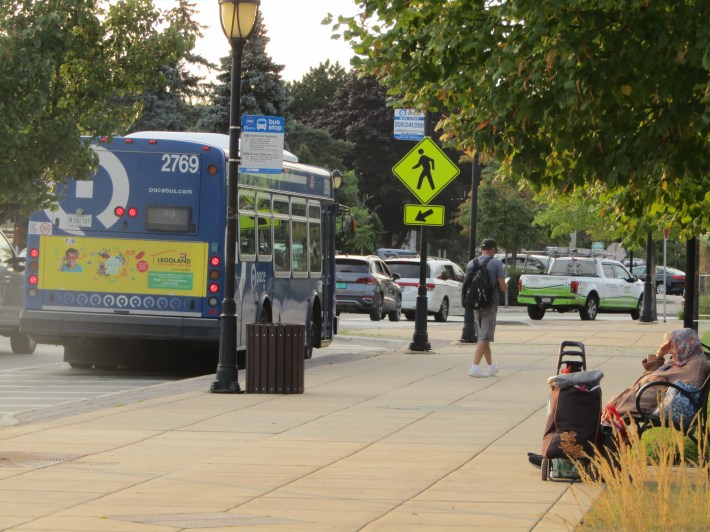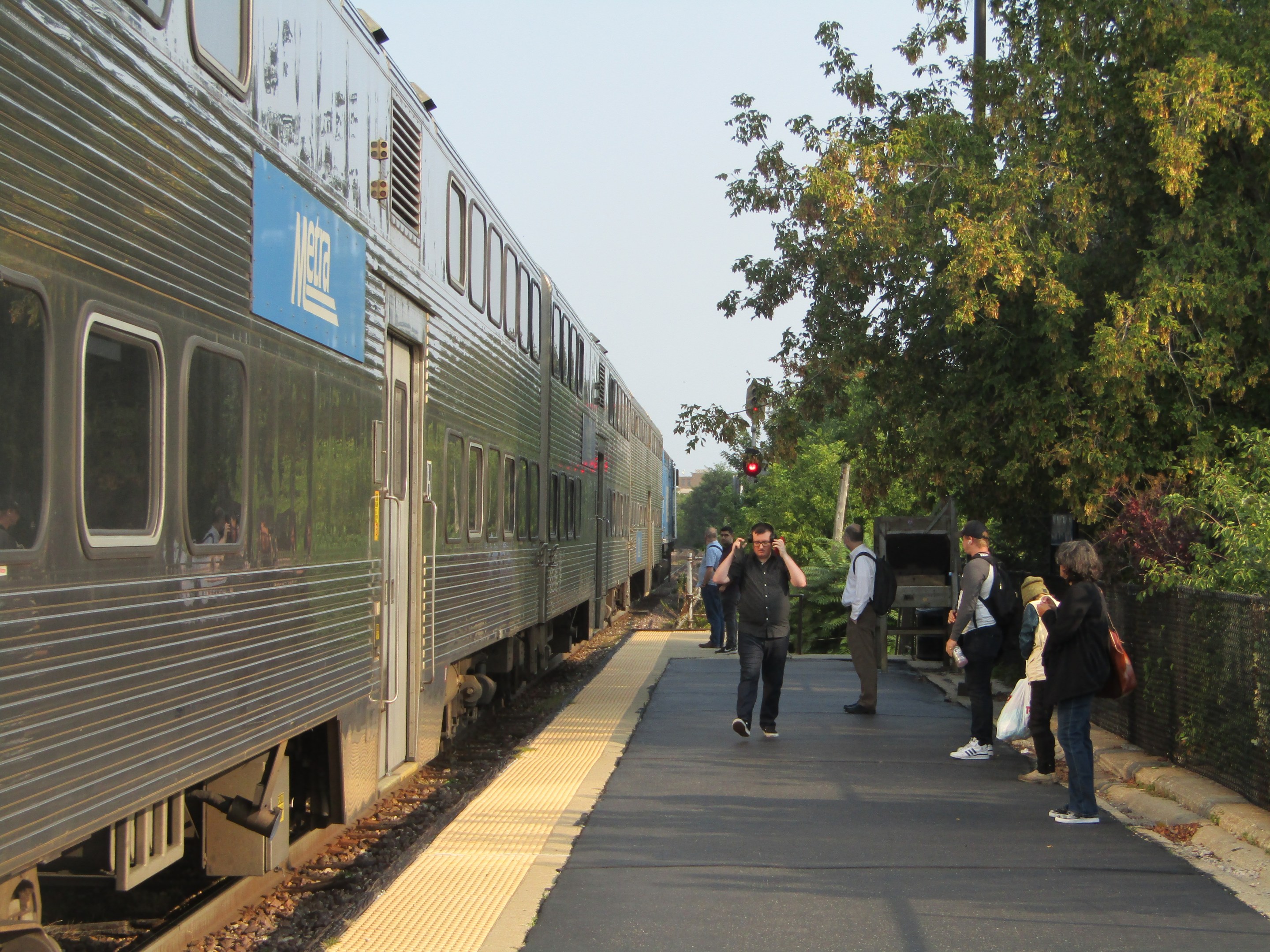There was good news today as the potential shutdown of four Metra lines, due to a threatened freight rail worker strike, was narrowly averted. The railroad unions representing conductors and engineers reached tentative agreements early this morning. While the union membership still needs to vote on the agreement, even if the members don't approve the agreement, Reuters reported that they wouldn't be able to strike for "several weeks." In other words, the potential shutdown has been, at worst, delayed.
According to Reuters, "Workers whose pay had been frozen will win double-digit increases and will be allowed to seek certain types of medical care without fear of being punished," and all members will get an "immediate 14.1 percent wage rise."
If the railroad engineers and conductors working for major freight railroads had chosen to strike today, some Metra lines would have been more affected than others.
Metra's BNSF Line and the three Union Pacific lines are operated by the freight railroads under contract with Metra. Since the engineers and conductors that keep those four lines running are freight railroad employees, if the strike had taken place, those lines simply would have stopped running as of late Thursday evening. Metra confirmed that the four lines it owns and operates – the two Milwaukee District lines and the other two “District” lines (Metra Electric District and Rock Island District) – would have kept operating as usual. The situation was less clear on the three lines where Metra operates the service but doesn’t own the tracks, the SouthWest Service, North Central Service, and Heritage Corridor lines.
The BNSF, Union Pacific Northwest, and Union Pacific North lines are the Metra system’s three busiest routes. While 'L' lines and Pace buses parallel some portions of the Union Pacific lines, the alternatives for BNSF riders are less straightforward, and many routes have no alternatives at all. Still, Pace was planning to allow all Metra pass holders to ride for free, and it was trying to beef up service on the routes serving Chicago. Earlier this week, transit agency spokesperson Maggie Daly Skogsbakken said that they were trying to adjust to the evolving situation on the fly, and some logistical issues – for example, how the drivers would handle paper monthly passes as opposed to Ventra app-based bases – were still being worked out on the fly.
The threatened strike
For the past few years, 12 labor unions representing workers at major North American railroads have been negotiating contracts. The railroads had reached tentative agreements with most of their unions based on the recommendations of a Presidential Emergency Board, which President Joe Biden appointed this summer. The board recommended raises amounting to 24 percent and $5,000 in bonuses in a five-year deal that’s retroactive to 2020. The deal also includes one additional day of paid leave per year and better health insurance.
But two unions continue to hold out: the Brotherhood of Locomotive Engineers and Trainmen, which represents the train engineers, and the Transportation Division of the International Association of Sheet Metal, Air, Rail and Transportation Workers, which represents the conductors. The railroad attendance policies are the major point of contention.
According to NPR, the railroads cut their workforces during the pandemic, even as online shopping drove up demand for shipping. The railroads increased hours, made it harder for employees to get time off, and increased penalties for showing up late. The two unions argued that this puts their members in danger.
On September 11, the two unions issued a joint statement saying that they were willing to negotiate, and arguing that it was the railroads that were refusing to budge and using the prospect of the railroad shutdown to pressure the unions into making concessions.
“Penalizing engineers and conductors for getting sick or going to a doctor’s visit with termination must be stopped as part of this contract settlement,” the unions stated. “No working-class American should be treated with this level of harassment in the workplace for simply becoming ill or going to a routine medical visit.”
Neither BNSF Railway nor Union Pacific had issued any statements on the potential work stoppage as of Wednesday evening.
In the meantime, Metra had announced that the BNSF and the Union Pacific lines would stop running that evening in the event of a strike. While the exact timing would have depend on the line, generally speaking, none of the trains that arrive at their final destination after 10 p.m. would have operated.
What service alternatives would have existed if the strike had happened?
In some cases, riders would have been able to fall back on nearby bus and ‘L’ routes. The CTA Green ‘L’ parallels the UP-West line from Harlem Avenue in Oak Park to Clinton Street in downtown Chicago. UP-Northwest riders could have caught the Blue Line at its Jefferson Park and Irving Park stations, located next to Metra stops, and UP-North riders in Evanston and Winnetka riders could have take the Purple Line instead.
Pace Route 213 largely parallels the UP-North line from the Howard Street CTA terminal to downtown Highland Park, and Route 472 would get riders as far north as Fort Sheridan. The CTA's #68 Northwest Highway bus route largely parallels the UP-Northwest Line between Jefferson Park and Uptown Park Ridge. Pace Route 209 continues following the UP-N as far as Des Plaines, and Route 234 gets riders as far as Mount Prospect. Pace routes 309 and 313 parallel the UP-West line from Oak Park to Bellwood, and then they split off and go a bit further out, reaching as far as Elmhurst and Village Park, respectively.

The BNSF line doesn’t have any kind of alternative service paralleling its the tracks, but there are some less direct connections. The closest thing it has is Pace Route 302, which connects the BNSF's La Grange Road station to the CTA Pink Line's Cicero Avenue stop.
Some Metra stations closer to Chicago have convenient north-south connections to the ‘L’. For example, Pace Route 240 provides a quick trip between the UP-NW's Dee Road station in Park Ridge and the Blue Line Cumberland stop, while Route 307 connects the Harlem station in Berwyn to Blue and Green ‘L’ lines.
Interestingly, there are some alternatives in the further-flung corners of the Metra system. Aurora commuters would have been able to get to the MD-West’s Elgin station by taking Route 802, then transferring to Route 801. Crystal Lake riders would have been able to take Route 806 to the MD-N's Fox Lake station, or Route 550 to the aforementioned Elgin station. But given how much time that detour would add to the commute, and the fact that it would take riders quite a bit out of their way, I’m not sure how viable of an option that would be, at least during rush hours.
Daly Skogsbakken recommended that people looking for an alternative to Metra take advantage of Paces highway express buses, noting that UP-NW riders can take the I-90/James Addams Memorial Tollway express buses, which run between Elgin and the Rosemont Blue station, making stops at Barrington Road in Hoffman Estates and Schaumburg’s Northwest Transportation Center. She also recommended I-55/Stevenson Expressway services as alternative for riders using the BNSF and Heritage Corridor lines. All these routes have park-n-ride facilities at their station stops.
Daly Skogsbakken added that Metra riders would be able to use Pace On Demand services. They operate similarly to Dial-a-Ride paratransit services, except that their fares are flat and they're available to the general public. In the event that some Metra lines had been shut down due to a rail strike, On Demand would have been be useful as last-mile service.




